Stories of Courage
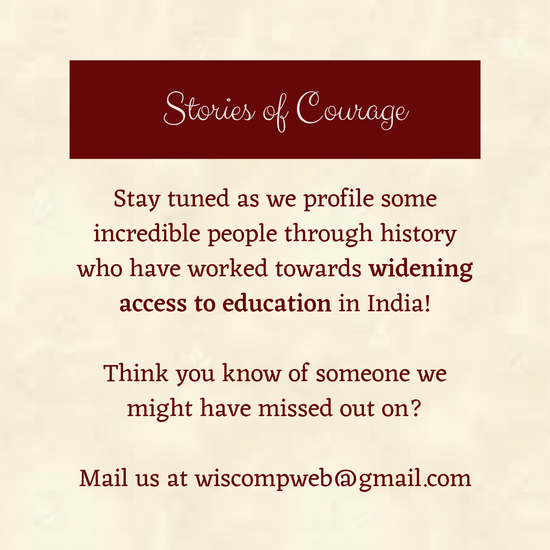
Think you know someone we might have missed out on?
Mail us at wiscompweb@gmail.com
Stories of Courage #22: Rajeshwari Chatterjee
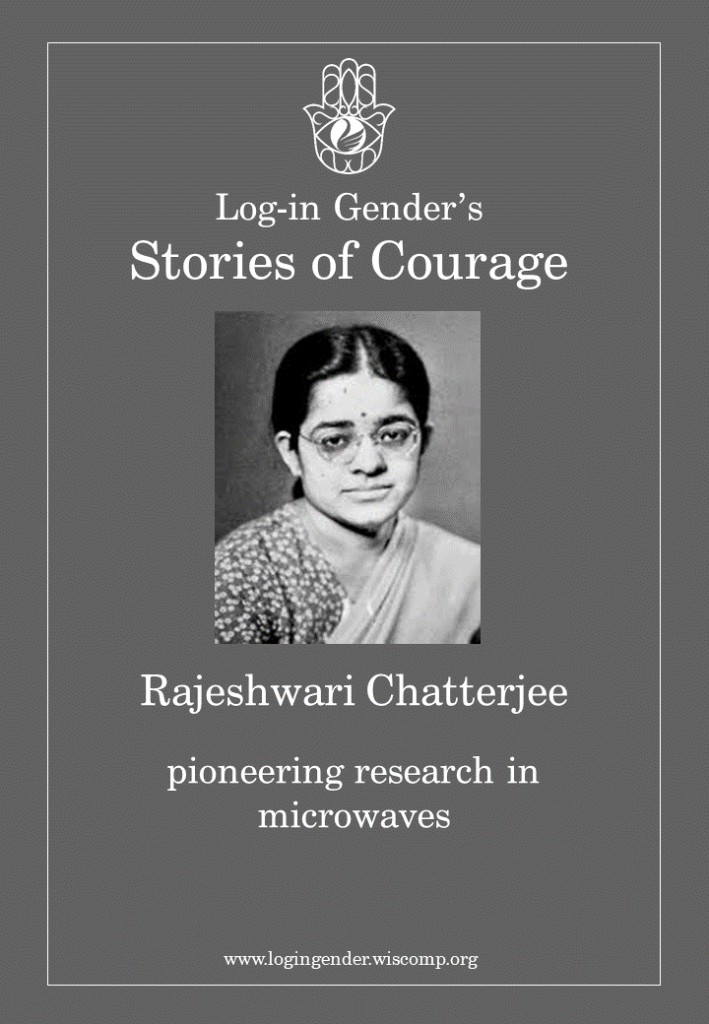
She wanted to work with Professor C V Raman, but he was resistant. Differing accounts state that the resistance was on account of her being a woman or that she did not have a background in Physics. The Delhi Government awarded her a scholarship upon finding her to be a ‘bright student’. She was able to go to the USA just before Indian Independence in 1947 and work on her Master’s degree at the University of Michigan, where she also earned her PhD in 1953.
Rajeshwari Chatterjee and her husband set up India’s first microwave engineering research lab.
Over a career spanning more than 30 years, Rajeshwari Chatterjee led pioneering research in microwaves, wrote several textbooks, and mentored numerous students who went on to be very successful in their own right.
Sources
- https://en.wikipedia.org/wiki/Rajeshwari_Chatterjee
- https://connect.iisc.ac.in/2017/05/remembering-rajeswari-chatterjee-iiscs-first-woman-engineer/
- https://ethw.org/Rajeshwari_Chatterjee
- https://www.thebetterindia.com/109876/things-to-know-rajeshwari-chatterjee-first-woman-achiever-posthumous-award/
Stories of Courage #21: HK Anasuya Devi
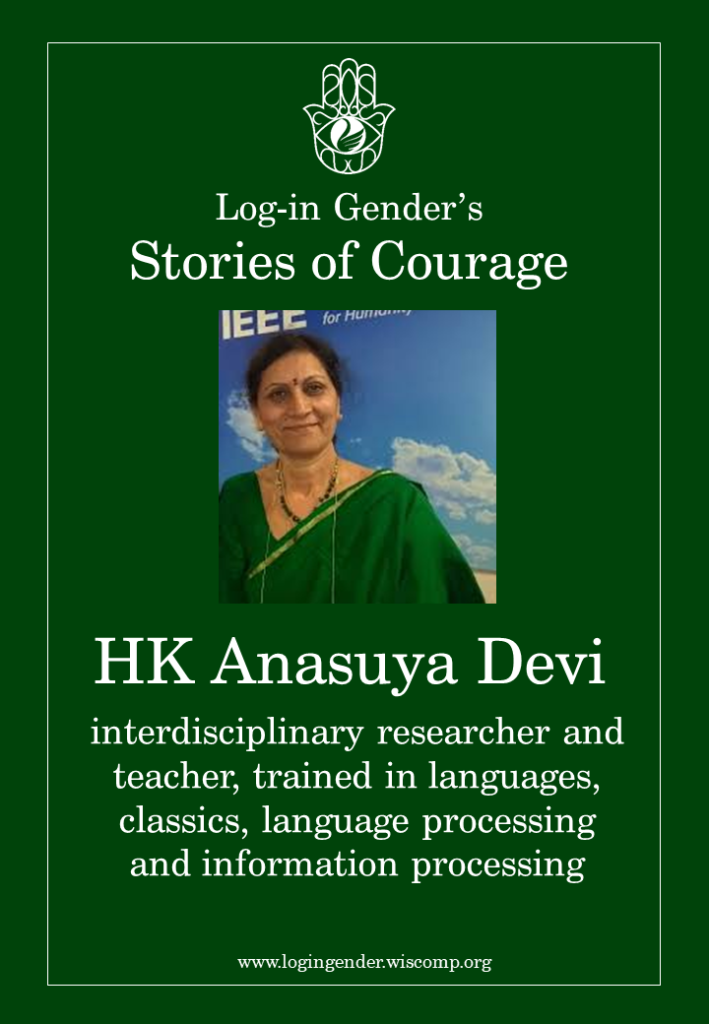
She had been accepted as a student at Harvard University and University of California, Berkely but her family did not permit her to travel abroad for her education, because it was taboo for young, unmarried girls to travel abroad. HK Anasuya Devi did her PhD work at the IISc in an interdisciplinary fashion and later even developed a system for soil taxonomy before ISRO sent its remote sensing satellite into space.
During her time as a student at IISc, she was very involved in student life: she set up a Samskruta Sangha, was instrumental in getting a new hostel built for women students, and in the setting up of swimming lessons for women students. She also helped re-instate students to their scholarships and was an active member of the student council.
Sources
Stories of Courage #20: Chanchal Uberoi

When she joined the mathematics department, it was a ‘service’ department that focused on equipping researchers from other departments with mathematical tools to aid their research. Taking this into account, when Chanchal Uberoi had to teach mathematics to students of other departments with little background in the discipline, she was careful to make several pedagogical interventions to make the study material more accessible.
Later, she took forward her research at IISc to the University of Cardiff and to the Harvard Observatory. She was also a founding member of the Joint Astronomy Programme which helped foster collaboration between the Indian Institute of Science and other institutions.
In 1999, she was offered the position of Dean of Science at the Institute, making her the first female Dean in the history of IISc. She found that female students found it easier to open up to her about the concerns, which goes to show the importance of women in positions of leadership and decision-making.
Even after retirement, she continued to attend lectures and events at the IISc.
Sources
- https://connect.iisc.ac.in/2018/06/remembering-my-long-association-with-the-institute/
- https://qz.com/india/1315451/the-history-of-the-first-female-students-at-bangalores-indian-institute-of-science/
Stories of Courage #19: Kamaladevi Chattopadhyay

Kamaladevi Chattopadhyay is associated with the renaissance and protection of Indian art forms and handicrafts, such as theatre and tribal art. She realised the importance of preserving and protecting these practices in the face of totalising British imperialism and other global forces of change. To this end she was involved in the setting up of institutions such as the National School of Drama, Sangeet Natak Academy, Cottage Industries Emporium, and the Crafts Council of India.
Significantly, Kamaladevi Chattopadhyay helped set up the township settlement of Faridabad, near Delhi, for refugees from the Northwest Frontier to rebuild their lives post-Partition.
She was awarded the Sangeet Natak Academy Fellowship, the Padma Bhushan, the Padma Vibhushan, and the Ramon Magsaysay Award for Community Leadership.
Sources
- https://en.wikipedia.org/wiki/Kamaladevi_Chattopadhyay
- https://www.indiatoday.in/education-today/gk-current-affairs/story/why-google-remembers-kamaladevi-chattopadhyay-the-unsung-feminist-freedom-fighter-1203511-2018-04-03
- https://indianexpress.com/article/who-is/who-is-kamaladevi-chattopadhyay-5121371/
- https://www.thehindu.com/opinion/op-ed/always-a-world-citizen/article25439130.ece
Stories of Courage #18: Ramabai Ranade
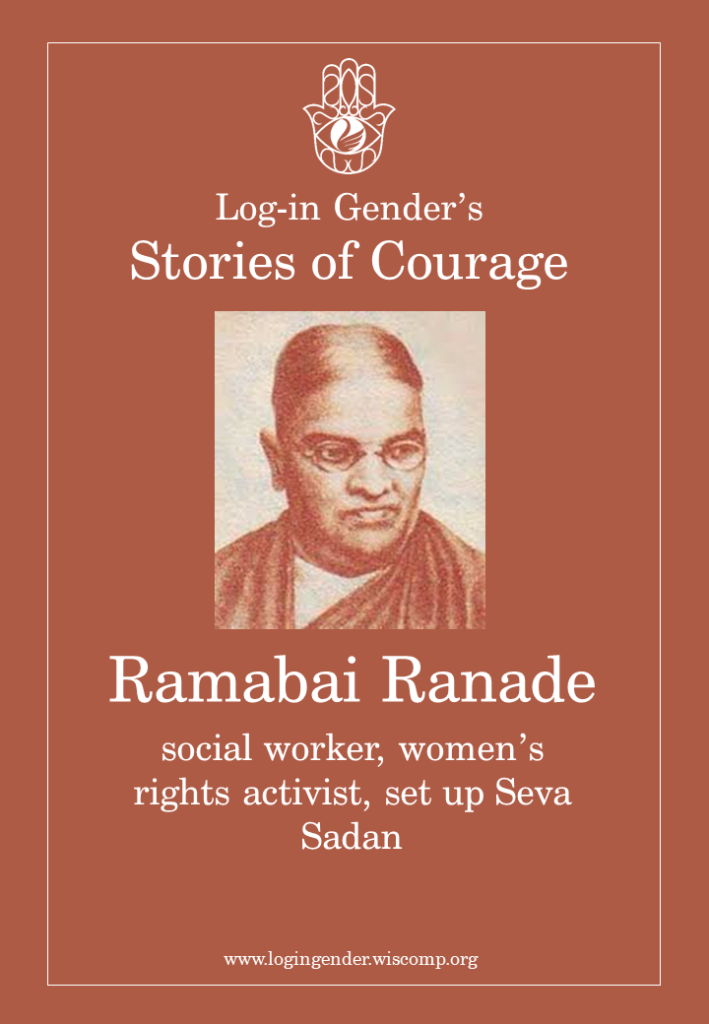
Ramabai Ranade set up the Seva Sadan which worked not only with middle class women but also women from the margins of society, especially widows who in those days had to conform to strict social codes that circumscribed widowhood. She even trained women in public speaking and handiwork such as knitting. Her most significant literary contribution is her autobiography, written in Marathi, Amchya Ayushyatil Kahi Athwani. Her activities earned her the ire of conservative society, but she continued undeterred.
Sources
- https://en.wikipedia.org/wiki/Ramabai_Ranade
- https://www.beaninspirer.com/ramabai-ranade-robust-supporter-of-womens-rights-and-wife-of-mahadev-ranade/
- http://memumbai.com/ramabai-ranade/
- https://feminisminindia.com/2017/06/12/ramabai-ranade-essay/
- http://www.streeshakti.com/bookR.aspx?author=3
Stories of Courage #17: Kamala Sohonie
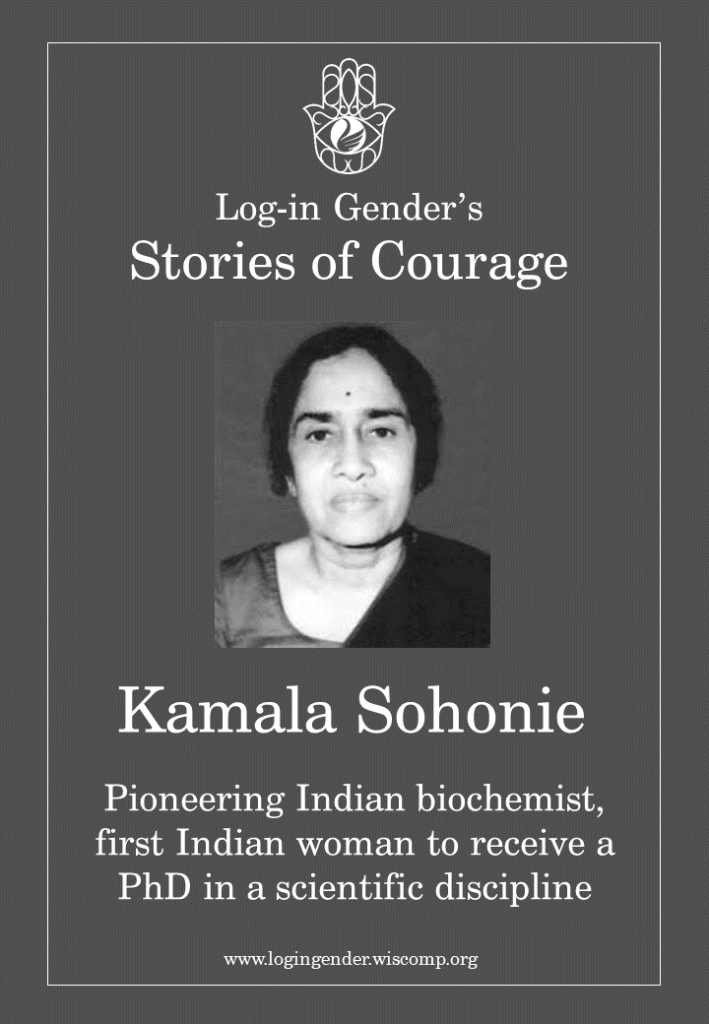
However, C. V. Raman refused to grant her admission on account of her being a ‘girl’. Kamala Sohonie (then Kamala Bhagvat) refused to accept this discriminatory and exclusionary attitude and demanded a clear and official justification as to why she would not be admitted. Finding that he could give no justification, Raman relented and Kamala Sohonie was granted admission. This admission, however, was on probationary basis and on the guarantee that she would not adversely impact the environment of the lab. Although she accepted these slights at the time, in order to be able to pursue her education, she never forgot the injustice and often spoke about the top-down discriminatory attitudes towards women in science in India.
After earning her MSc from IISc, she went on to earn her PhD from the University of Cambridge. Despite the fact that her thesis was significantly shorter than those of her contemporaries, her research was impressive. She was appointed Professor and Head of the Department of Biochemistry at Lady Hardinge Medical College in New Delhi.
Her major work is on ‘Neera’ or palm extract, upon which she embarked at the suggestion of the then-Indian President Dr Rajendra Prasad. This research found that Vitamins A and C and iron survived concentration of Neera into palm jaggery and molasses. Neera would become an inexpensive dietary supplement that could be added to the diets of malnourished adolescents and pregnant women from tribal communities. She was awarded the Rashtrapati Award for this work.
Sources
- https://www.thebetterindia.com/91026/kamala-sohonie-india-woman-scientist-iisc-cambridge/
- https://www.ias.ac.in/public/Resources/Initiatives/Women_in_Science/Contributors/kamalasohonie.pdf
- https://www.ias.ac.in/article/fulltext/reso/021/04/0301-0314
- https://www.livehistoryindia.com/history-daily/2018/08/24/the-first-lady-of-indian-science
- https://feminisminindia.com/2017/12/25/kamala-sohonie-phd-science/
- https://en.wikipedia.org/wiki/Kamala_Sohonie
Stories of Courage #16: Irawati Karve
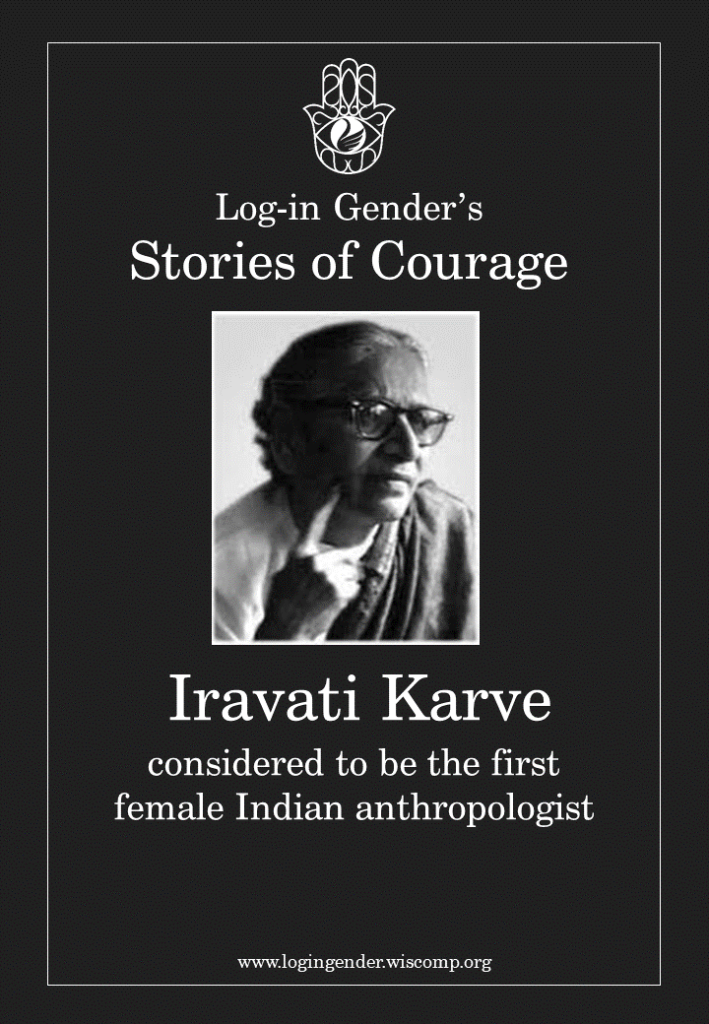
Irawati Karve is considered to be the first female anthropologist from India.
Sources
- https://en.wikipedia.org/wiki/Irawati_Karve
- http://www.yourarticlelibrary.com/sociology/biography-of-irawati-karve-and-his-contribution-towards-sociology/35023
- https://feminisminindia.com/2018/10/15/irawati-karve-indian-sociology/
- https://www.sociologygroup.com/irawati-karve/
Stories of Courage #15: Maharani Gowri Parvati Bayi
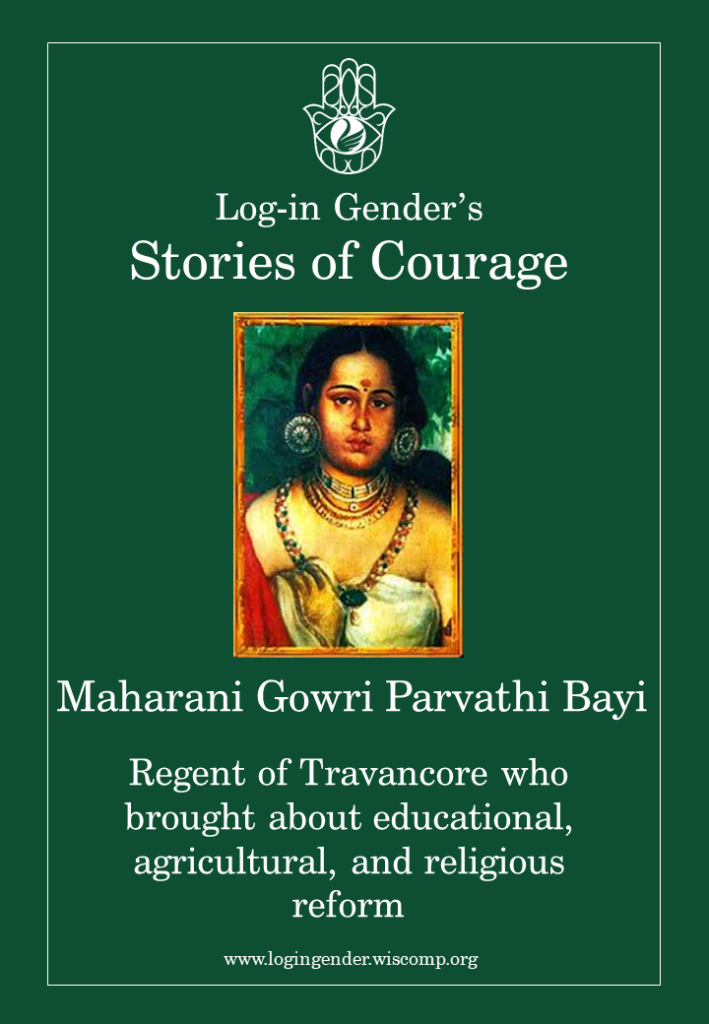
Gowri Parvathy Bayi also popularized the practice of vaccination, along with working towards eliminating caste- and religion-based exclusionary practices in agriculture and everyday life.
Sources
Stories of Courage #14: Rohini Godbole
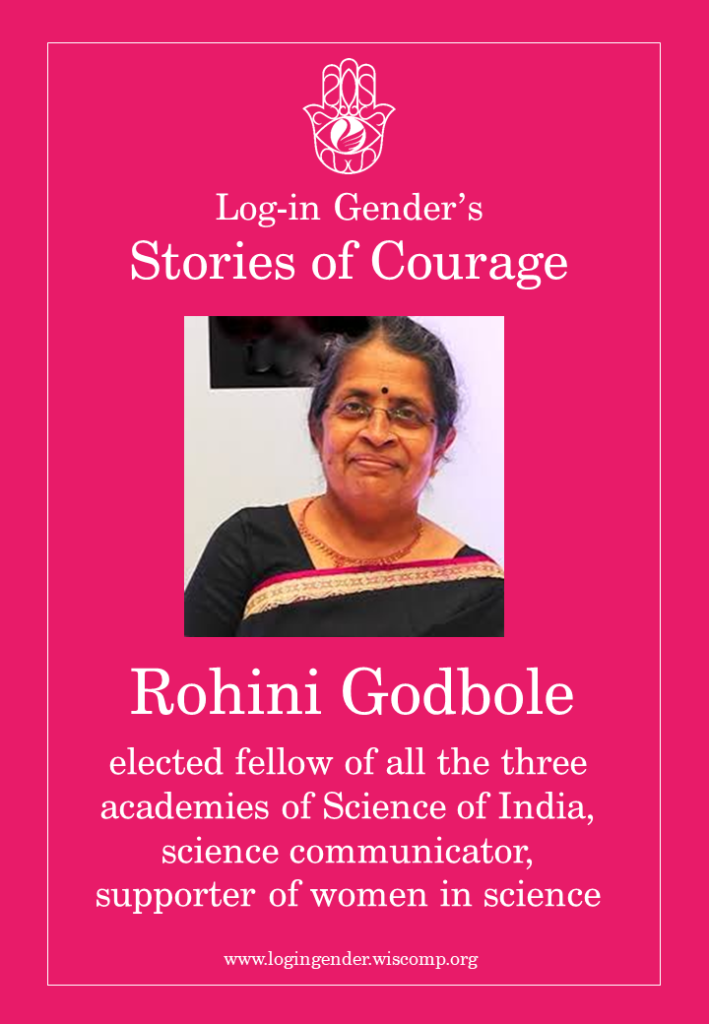
Rohini Godbole is also a science communicator with a focus on women in science in India. She has also edited a book with Ram Ramaswamy titled Lilavati’s Daughters. It is a collection of biographical essays about Indian women scientists.
Sources
- https://en.wikipedia.org/wiki/Rohini_Godbole
- http://rmgodbole.in/
- http://nobelprizeseries.in/tbis/rgodbole
Stories of Courage #13: Violet Bajaj
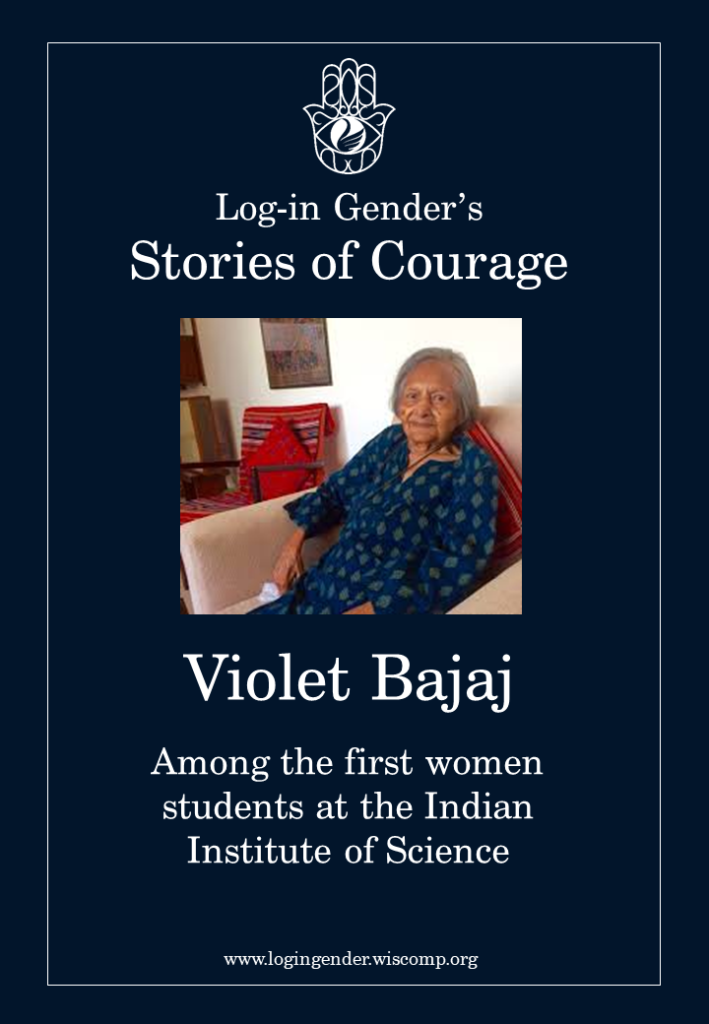
Violet Bajaj notes that IISc of the 1940s as being a “caste-ridden” place. However, the women’s hostel was small and self-run – so the caste divisions of the outside campus did not apply. She recalls learning about Darwin’s Theory of Evolution as a student and becoming an atheist. She is also aware that she and her fellow women students were pioneers in a male dominated space, and that they have faced several discriminations.
Sources
- https://connect.iisc.ac.in/2018/06/the-colourful-life-of-violet/
- https://qz.com/india/1315451/the-history-of-the-first-female-students-at-bangalores-indian-institute-of-science/
Stories of Courage #12: Kadambini Ganguly

She studied medicine in Calcutta Medical College with a government scholarship for women students. She graduated a gynaecologist and had a successful private practice until 1888 when she was appointed to Lady Dufferin Women’s Hospital. Unsurprisingly, Ganguly faced criticism and censure for her choices from orthodox sections of society and even from teaching staff.
She became the first woman to find a place on the dais at an Indian National Congress session; she also occupied several other important positions, including becoming the first chair of the Transvaal Indian Association, formed in South Africa by Mahatma Gandhi to protest against anti-Indian legislation. Kadambini Ganguly also drew the awe and attention of Florence Nightingale and Annie Besant.
Sources
https://en.wikipedia.org/wiki/Kadambini_Ganguly
https://theprint.in/theprint-
essential/kadambini-ganguly-
the-first-indian-woman-to-
become-a-practising-doctor/128383/
https://www.indiatoday.in/
education-today/gk-current-
affairs/story/kadambini-
ganguli-india-s-first-female-
doctor-who-made-calcutta-
medical-college-start-
admitting-women-1570858-2019-07-18
https://www.thebetterindia.
com/113789/kadambini-ganguly-
one-of-indias-first-women-graduates-doctors/
https://feminisminindia.com/
2019/01/29/kadambini-ganguly-doctor/
Stories of Courage #11: Fathima Beevi
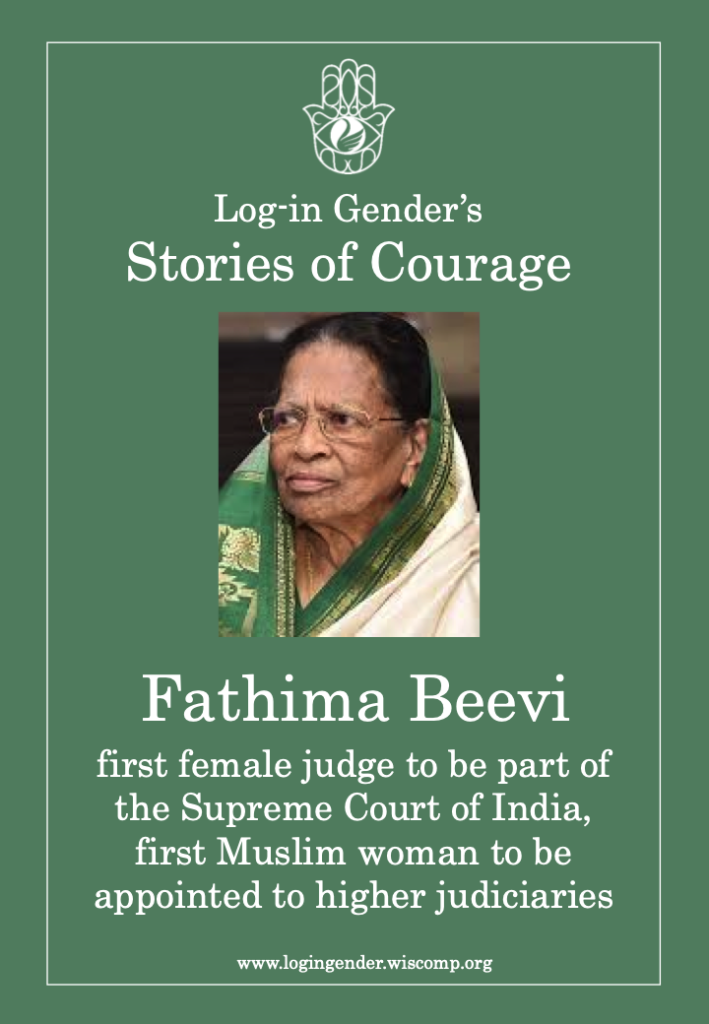
In recent interviews she acknowledges that women are not equally represented in the legal profession and that there is a need to elevate their position.
Sources
- https://en.wikipedia.org/wiki/Fathima_Beevi
- https://www.thebetterindia.com/127700/fathima-beevi-kerala-indias-first-female-supreme-court-judge/
- https://www.huffingtonpost.in/2017/05/02/fathima-beevi-indias-first-female-supreme-court-judge-just-tu_a_22064840/
Stories of Courage #10: Janaki Ammal

Janaki Ammal (4 November 1897 – 7 February 1984) was a botanist, cytogeneticist, and phytogeographer. She was born in Tellicherry (now Thalassery, Kerala) and completed her schooling there before moving to Madras to obtain her Bachelor’s Degree from Queen Mary’s College before receiving her Honours Degree in Botany from Presidency College in 1921. It was while she was teaching at Women’s Christian College that she was awarded the prestigious Barbour Scholarship from the University of Michigan in the USA. She earned her Master’s Degree and Doctorate from here and was then appointed Professor of Botany at Maharaja’s College of Science in Trivandrum.
In 1935, Janaki Ammal was selected to be a research fellow by the famous scientist and Nobel laureate C. V. Raman in the very first year of the Indian Academy of Sciences. However, she faced several difficulties among her peers on account of being a single woman and because she was from what was considered a backward caste.
Janaki Ammal’s most notable work was on sugarcane and the eggplant (brinjal).She has collected various valuable plants of medicinal and economic value from the rain forests of Kerala. She was appointed Officer on Special Duty to the Botanical Survey of India (BSI) in October 1952. Later, she served as Director-General of the BSI. She was elected Fellow of the Indian Academy of Sciences in 1935, and of the Indian National Science Academy in 1957. The University of Michigan conferred an honorary LL.D. on her in 1956 while the Government of India awarded her the Padma Shri in 1977.
Sources
https://en.wikipedia.org/wiki/Janaki_Ammal
https://www.thebetterindia.
com/75174/janaki-ammal-botanist-sugarcane-magnolia/
https://www.iiim.res.in/
herbarium/edavaleth-kakkat-janaki-ammal.htm
https://www.thenewsminute.com/
article/long-ignored-renowned-
botanist-janaki-ammal-finally-recognised-biography-102823
Stories of Courage #9: Annie Mascarene
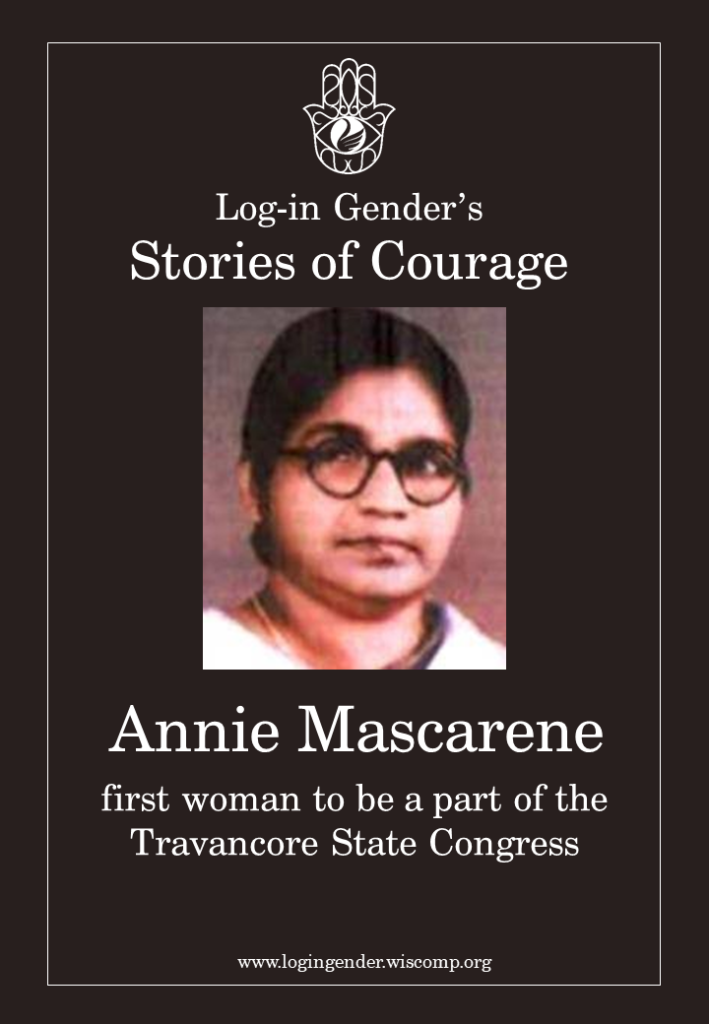
Sources
- https://medium.com/women-in-politics/annie-mascarene-4fa14d2898dc
- https://feminisminindia.com/2018/03/07/annie-mascarene-constituent-assembly/
- https://en.wikipedia.org/wiki/Annie_Mascarene
Stories of Courage #8: Anna Mani
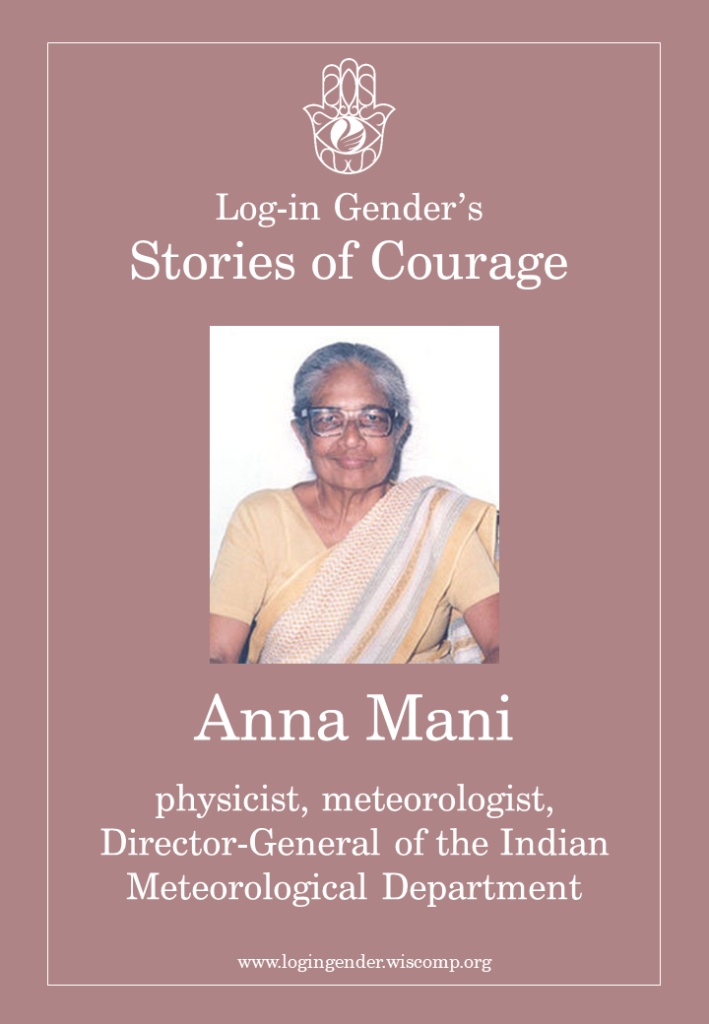
Sources
- https://www.ias.ac.in/public/Resources/Initiatives/Women_in_Science/Contributors/annamani.pdf
- https://scroll.in/magazine/887873/anna-mani-was-a-pioneering-scientist-so-why-dont-more-indians-know-about-her
- https://thewire.in/the-sciences/anna-mani-pioneering-scientist-birth-centenary
Stories of Courage #7: Dakshayani Velayudhan
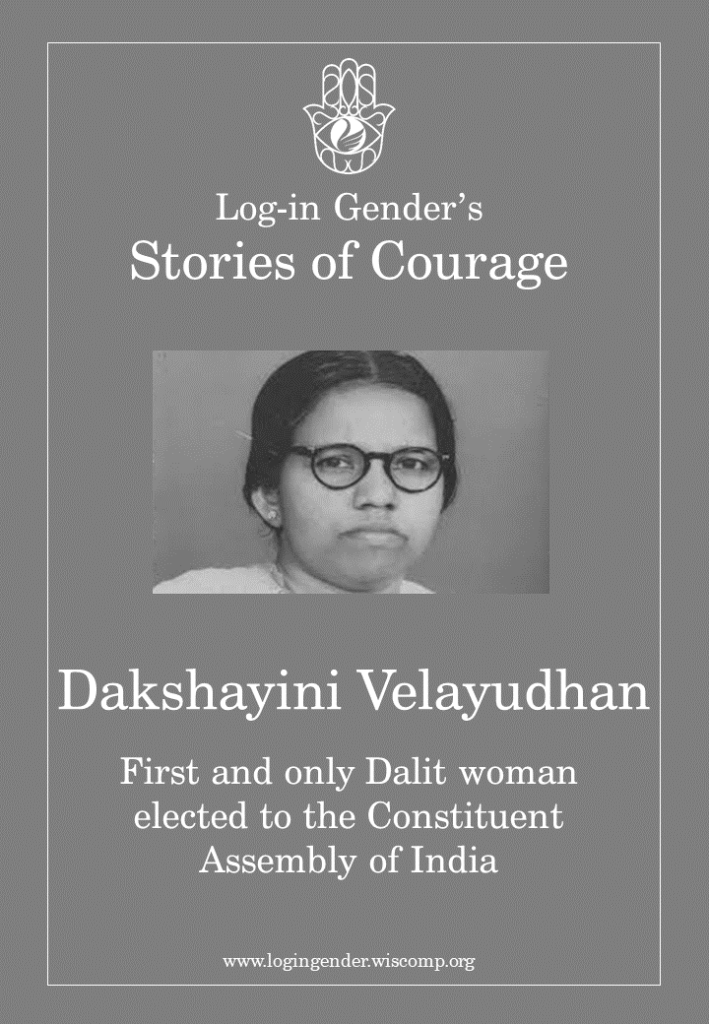
Sources
- https://en.wikipedia.org/wiki/Dakshayani_Velayudhan
- https://www.thenewsminute.com/article/remembering-dakshayani-velayudhan-lone-dalit-woman-constituent-assembly-92265
- https://www.thebetterindia.com/133271/dakshayani-velayudhan-dalit-woman-india-constituent-assembly/
- https://www.youtube.com/watch?v=1ldVv2TFZME
- https://indianexpress.com/article/opinion/columns/history-headline-remembering-dakshayani-a-remarkable-dalit-life-5698513/
Stories of Courage #6: Asima Chatterjee
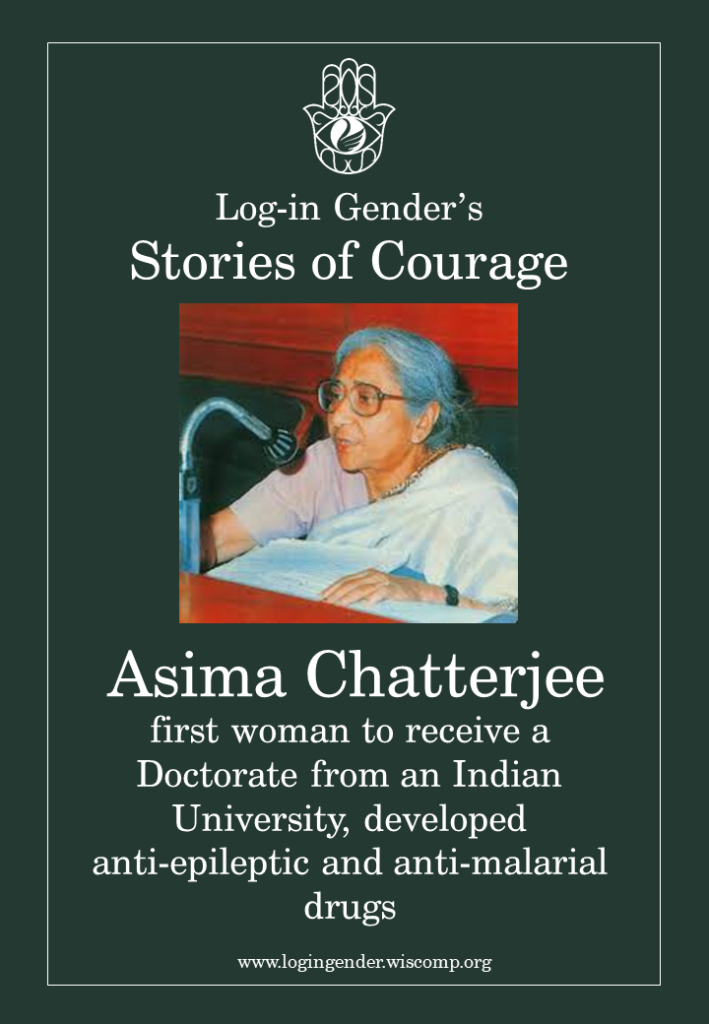
Sources
- https://scientificwomen.net/women/chatterjee-asima-113
- https://artsandculture.google.com/exhibit/rgKiCdKgS8UJIw
- https://www.ias.ac.in/public/Resources/Initiatives/Women_in_Science/Contributors/Chatterjee.pdf
- https://en.wikipedia.org/wiki/Asima_Chatterjee
Stories of Courage #5: Anandibai Joshi
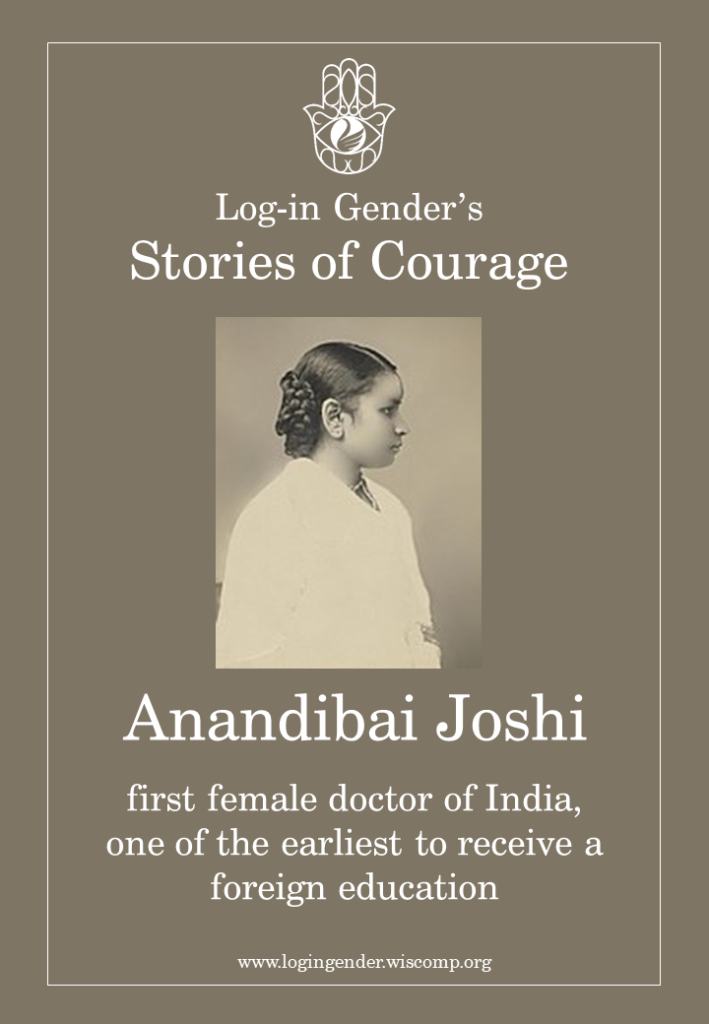
Anandibai Joshi (31 March 1865 – 26 February 1887) was born in Kalyan in Bombay Presidency, India. Born, Yamuna, she was married to Gopalrao Joshi, nearly twenty years her senior, when she was nine years old. He named her Anandi and was obsessive about her education. She was the first woman from the erstwhile Bombay Presidency of India who studied and graduated in Western medicine in the United States where she received her degree from the Women’s Medical College of Pennsylvania. She was appointed the Physician-in-Charge of the Female Ward at the Albert Edward Hospital in Kolhapur. Andandibai Joshi was only 21 when she died of tuberculosis. There is a crater on Venus named after her.
Sources
- https://medium.com/@nschsravanthi/anandibai-gopalrao-joshi-what-can-we-learn-from-her-life-7cad9147f710
- https://thelogicalindian.com/rewind/anandibai-joshi/
- https://www.ndtv.com/people/who-is-anandi-gopal-joshi-all-you-need-to-know-about-indias-first-female-doctor-1831136
- https://scroll.in/reel/912058/anandi-gopal-first-indian-woman-to-study-medicine-in-america-has-a-story-that-must-be-told
Stories of Courage #4: Sister Nivedita
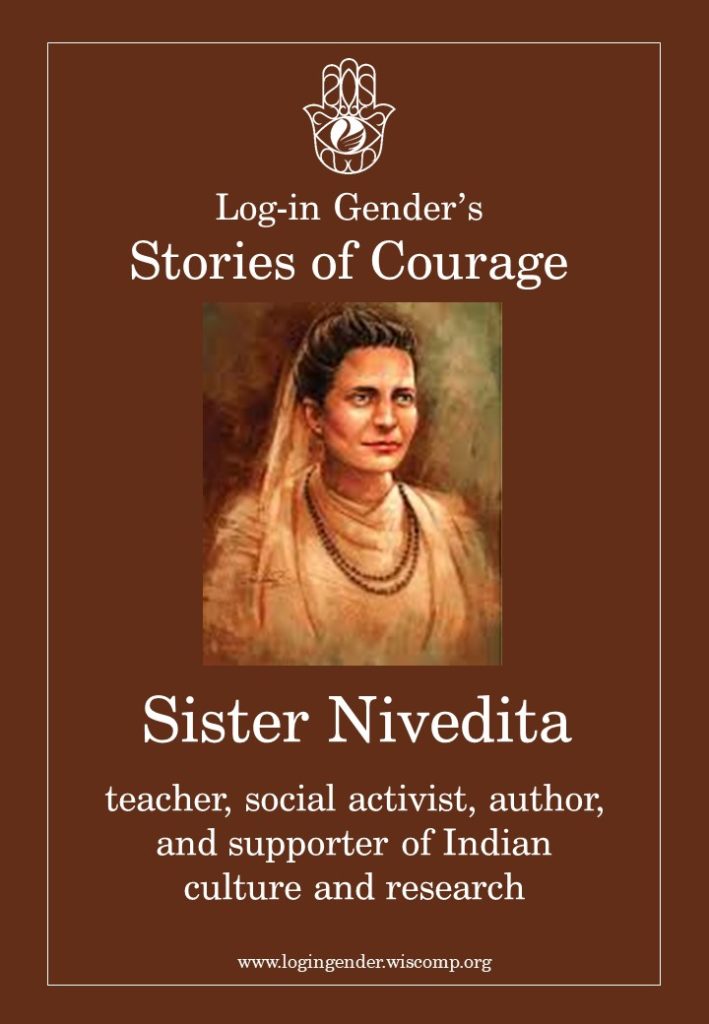
Margaret Elizabeth Noble (28 October 1867 – 13 October 1911) was an Irish woman who dedicated herself to education, writing, and social activism in India. She was a disciple of Swami Vivekananda who named her Sister Nivedita. From her early years itself, Sister Nivedita believed that serving her fellow humans was true service to God and this was why she dedicated herself to variety of altruistic projects.
Sister Nivedita believed in the education of women and the depressed classes – generally groups that did not have access to any education. She took it upon herself to tour America and Europe to raise funds towards setting up a school that would provide access to education to those who were deprived of it. Swami Vivekananda invited her to India with a view of having her set up a school to provide modern education to Indian women. This school was set up in the Bagbazar area of Calcutta in November 1898, and remains an important school of the city even to this day.
Sister Nivedita also supported and promoted Indian culture and scientific research, famously aiding the Indian scientist Jagdish Chandra Bose when the British government treated his work with indifference.
Stories of Courage #3: Fatima Sheikh
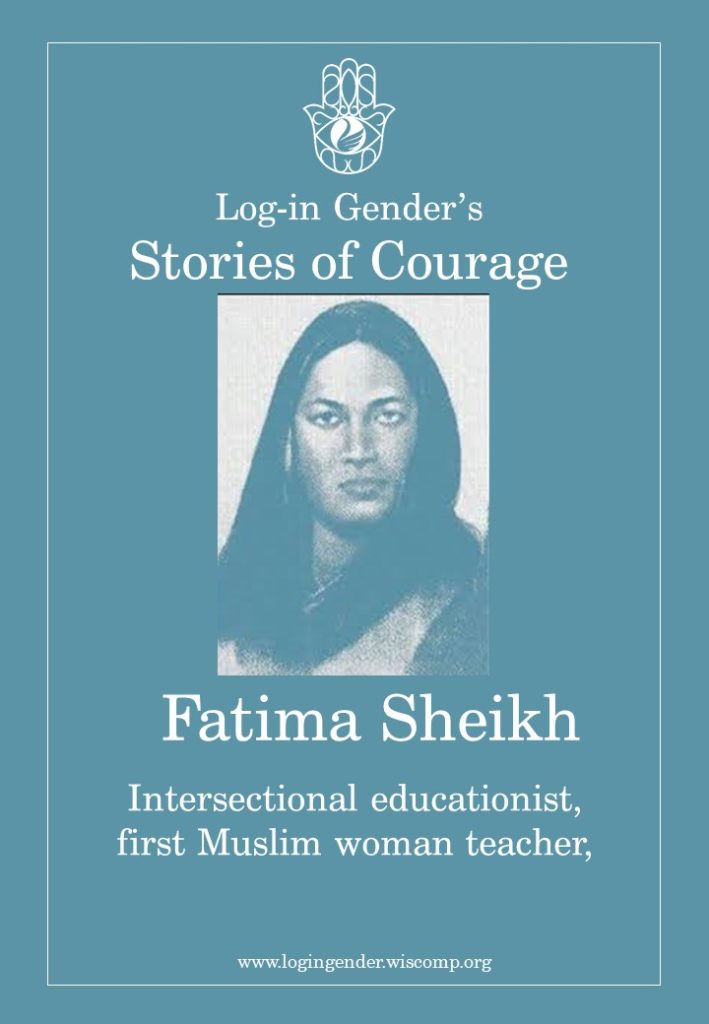
Although little is known about Fatima Sheikh, it is widely held that she was the first woman Muslim teacher in India. She taught alongside Savitribai Phule and attended teacher training courses with her in order to gain legitimacy as teachers. Fatima Sheikh and her brother Usman offered their home up to the Phules so that a revolutionary school could be set up that would provide education to the oppressed castes and to women. Fatima Sheikh was dauntless in her commitment to the education of those historically excluded from educational spaces, as is evident in her conviction in the face of great opposition from upper-caste Hindus and orthodox Muslims. Sheikh is even said to have personally persuaded families to send their girls to get an education. Farima Sheikh’s contributions to education in India are truly intersectional.
Stories of Courage #2: Jotirao Phule
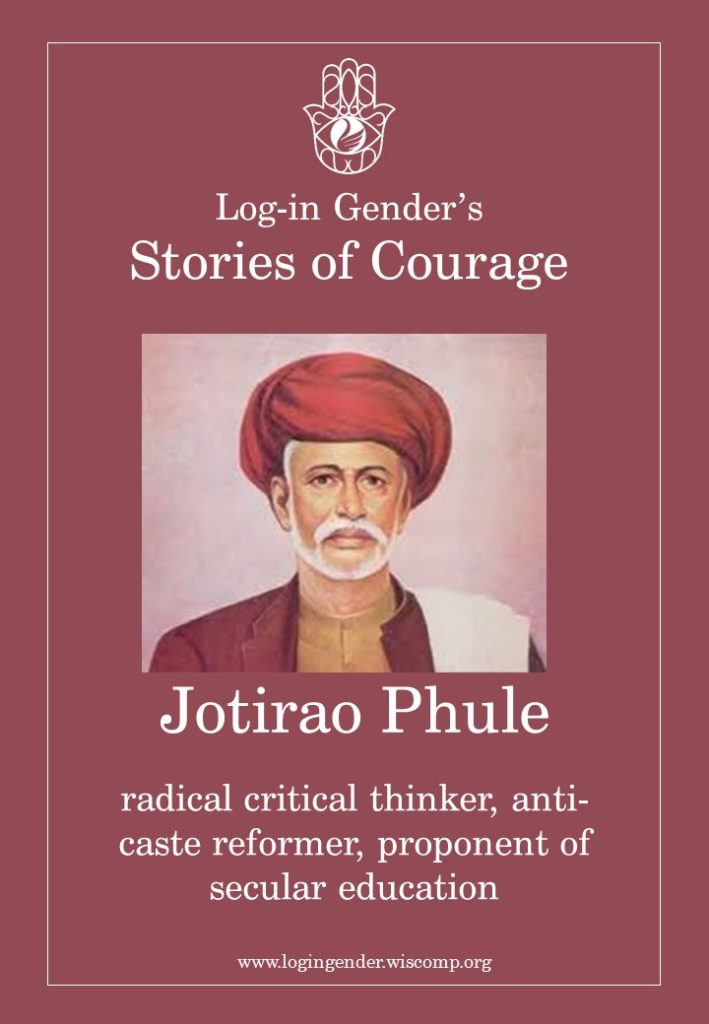
Jotirao Phule (11 April 1827 – 28 November 1890) was a radical critical thinker and anti-caste, pro-secular education social reformer. He was from the Satara District in Maharashtra, India and belonged to the Mali community, which is today an Other Backward Caste (OBC). He believed that secular education would be the means by which the lower castes could liberate themselves from Brahmanical hegemony and hypocrisy.
Jotirao Phule was married to Savitribai Phule, and along with her set up schools for girls and for students from the lower castes. These schools are considered to be the first indigenous-run schools in India. He condemned Vedic knowledge, as it upheld the exploitation of the lower castes, and instead taught modern science at his schools.
Additionally, Jotirao Phule believed that education would aid the lower castes in their attempts to transcend untouchability (a practice that he condemned), archaic conventions such as shaving the heads of Hindu widows, and inflexible ritualistic religious practices.
Stories of Courage #1: Savitribai Phule
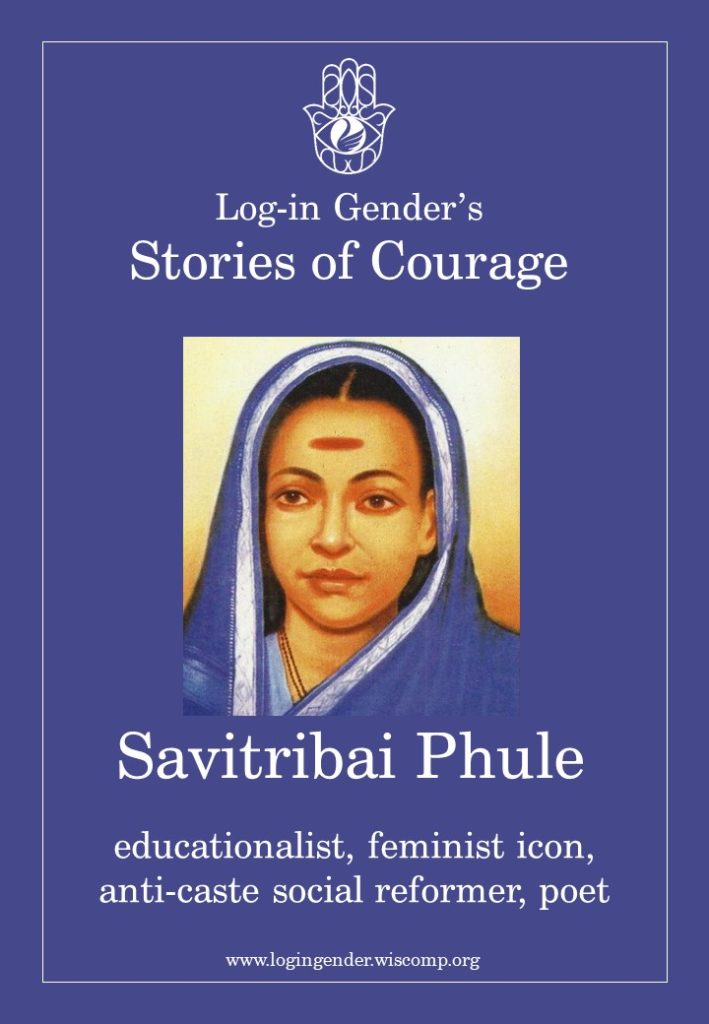
Savitribai Phule (3 January 1831 – 10 March 1897 )was an educationalist, feminist icon, poet, and anti-caste social reformer from what is today the Satara District in Maharashtra, India. She, like her husband, Jotirao Phule belonged to the Mali community which is today considered to be an Other Backward Caste (OBC).
Educated by her husband, against the wishes of their community in specific and society in general, Savitribai Phule went on to complete teacher training courses and is considered to be the first woman teacher in India. The couple set up several schools for girls and for students from the lower castes.
Savitribai Phule’s actions invited the ire of conservative upper caste and lower caste members of society alike. As a result, she is said to have carried an extra sari on her way to teach school to change into after being attacked with cow dung by detractors. Savitribai Phule toiled tirelessly to spread education, which she believed would help eradicate regressive practices such as child marriage, sati, and untouchability.
Sources:
- https://en.wikipedia.org/wiki/Savitribai_Phule
- https://learn.culturalindia.net/savitribai-phule.html
- https://www.financialexpress.com/india-news/savitribai-phule-7-facts-about-indias-first-feminist-icon/1432140/
- https://www.vice.com/en_in/article/wj39wn/savitribai-phulethe-og-rebel-with-a-cause
- https://www.livemint.com/Leisure/DmR1fQSnVD62p4D3eyq9mO/The-life-and-times-of-Savitribai-Phule.html
